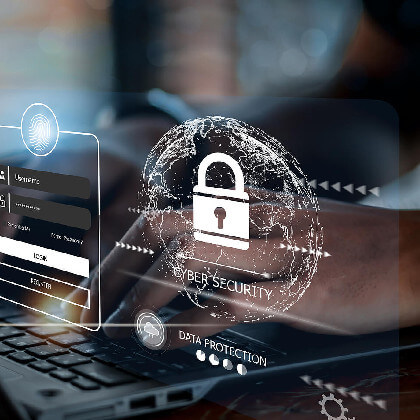
In today’s digital landscape, the rise of cyber threats is a constant concern for businesses of all sizes. Effective threat detection and response play a crucial role in improving cybersecurity. Understanding how these processes protect your business can help you stay one step ahead of cybercriminals.
This article will explore what threat detection and response entail, why they are vital for modern cybersecurity, and provide practical tips for enhancing these defenses within your organization. We’ll also highlight how implementing these measures can safeguard sensitive information and maintain business continuity.
What Is Threat Detection and Response?
Threat detection involves identifying potential security breaches in real-time, allowing an organization to act swiftly before damage occurs. This could be anything from spotting unusual login patterns to detecting malware within the network. Advanced tools and techniques are often deployed to monitor network traffic, analyze behaviors, and pinpoint vulnerabilities that could be exploited by attackers.
Response, on the other hand, is the immediate action taken once a threat is detected. This process includes isolating affected systems, removing malicious software, restoring data from backups, and informing stakeholders about the incident. A robust response plan ensures that the impact of a security breach is minimized, preventing extended downtime and loss of sensitive information.
Together, threat detection and response form a comprehensive defense strategy aimed at both preventing attacks and minimizing damage when they occur. By integrating these procedures into your cybersecurity policy, your business can remain resilient against an ever-evolving array of digital threats.
Why Are These Measures Vital for Modern Cybersecurity?
The importance of threat detection and response in cybersecurity cannot be overstated. Firstly, cyber threats are more sophisticated today than ever before. Attackers employ complex methods such as social engineering, zero-day exploits, and advanced persistent threats (APTs) to bypass traditional security measures. Without effective detection mechanisms in place, these harmful activities can go unnoticed until significant damage has been done.
Secondly, regulatory compliance often necessitates stringent cybersecurity practices. Many industries must adhere to legal regulations that mandate timely reporting of security incidents and require demonstrable efforts to protect sensitive data. Implementing robust threat detection and response systems helps organizations meet these regulatory requirements while showcasing a commitment to customer data protection.
Lastly, the financial repercussions of a cyber attack can be devastating. Beyond immediate costs such as data recovery and system repairs, there are long-term effects like reputational damage and loss of customer trust. An efficient attack mitigation framework not only protects assets but also preserves the reputation and operational integrity of your business.
Practical Tips for Enhancing Threat Detection and Response
Improving threat detection and response starts with adopting the right technologies and practices. Firstly, consider deploying automated monitoring systems that leverage artificial intelligence (AI) and machine learning (ML). These tools excel at analyzing vast amounts of data quickly to identify anomalies indicative of cyber threats.
Regularly conducting penetration testing is another best practice that aids in refining your defenses. By simulating potential attacks on your system, you can discover weaknesses before genuine attackers do. These insights allow you to fortify vulnerable areas proactively rather than reactively addressing issues post-breach.
Employee training is equally crucial; your workforce should understand the significance of cybersecurity protocols as well as how to recognize potential threats like phishing emails or suspicious links. An educated team becomes an additional line of defense capable of supporting technological countermeasures through informed actions.
In Summary
Understanding how threat detection and response improve cybersecurity reveals their essential role in protecting against modern-day digital threats. By continuously monitoring network activities to spot irregularities promptly and executing swift responses to neutralize identified risks, businesses can minimize their exposure to potentially damaging cyber incidents.
For companies looking to implement effective threat detection and response strategies tailored to their unique needs, we recommend reaching out to Cyber Craft Networks in Southlake, TX for expert assistance. Our team offers comprehensive services designed to fortify your digital infrastructure while ensuring resilience against evolving cyber threats. Get a free quotation or contact us with any questions regarding our cybersecurity solutions today!
Mike Young is a cybersecurity expert with over 15 years of experience. As the leader of Cyber Craft Networks in the Dallas/Ft. Worth area, he specializes in fortifying businesses against digital threats. Mike’s commitment to excellence ensures comprehensive IT support and advanced cybersecurity solutions for businesses of all sizes.
